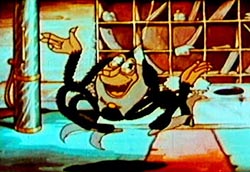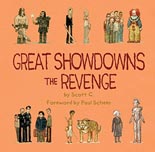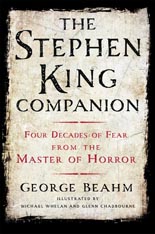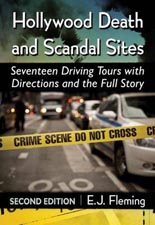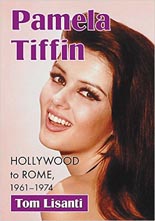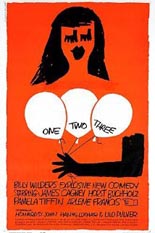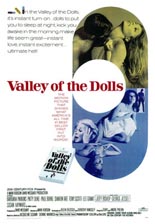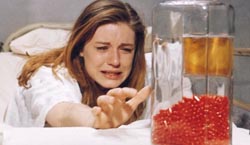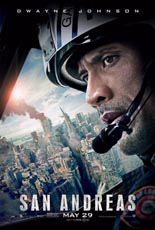
 When Dwayne Johnson (né The Rock) is introduced to San Andreas’ watchers, he’s done so with a literal beam of sunlight encircling his bald noggin like a halo, as if to say, “Here is our hero, our savior. He will save us all.” Was there ever any doubt?
When Dwayne Johnson (né The Rock) is introduced to San Andreas’ watchers, he’s done so with a literal beam of sunlight encircling his bald noggin like a halo, as if to say, “Here is our hero, our savior. He will save us all.” Was there ever any doubt?
Fresh off Furious 7, Johnson plays Ray, a Los Angeles Fire Department rescuer loaded with all-American character traits: military service and more than 600 saves under his utility belt. Where are this do-gooder’s wings? They’re the blades of the helicopter he pilots above the City of Angels, plucking texting teen girls from their precarious cliffside perches.
So heroic is Ray, it’s somewhat of a surprise that when a good chunk of California succumbs to a totally bitchin’ earthquake, the script by Carlton Cuse (TV’s Bates Motel) is unconcerned with seeing how many more dozens he can add to his 600 record; instead, his focus narrows to only two people among the affected millions: his estranged wife, Emma (Carla Gugino, Sucker Punch), and their well-developed daughter (Alexandria Daddario, Texas Chainsaw). If you weren’t married to Ray or a product of that union … sorry to say, but fuck all y’all.
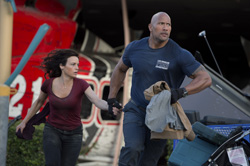 And you know what? That’s really all San Andreas needs. Effects-driven spectacles such as this often are criticized for being soulless; in (perhaps overcorrecting and) confining the emotional scope to the family unit, however fractured, Brad Peyton (who directed Johnson in 2012’s better-than-you’d-think “kidventure” Journey 2: The Mysterious Island) at least attempts to show that feelings can bloom while stuff goes boom. Now, it still comes off as manufactured schmaltz, but again, a solid try is a solid try; the film’s $155 million take is Peyton’s participation trophy.
And you know what? That’s really all San Andreas needs. Effects-driven spectacles such as this often are criticized for being soulless; in (perhaps overcorrecting and) confining the emotional scope to the family unit, however fractured, Brad Peyton (who directed Johnson in 2012’s better-than-you’d-think “kidventure” Journey 2: The Mysterious Island) at least attempts to show that feelings can bloom while stuff goes boom. Now, it still comes off as manufactured schmaltz, but again, a solid try is a solid try; the film’s $155 million take is Peyton’s participation trophy.
But let’s get real: Who sees an action movie — particularly one constructed around what insurance companies love to term “an act of God” — with family values in mind? Disaster flicks are brain-off excuses to see buildings crumble and cities fall. The effects of L.A. and San Francisco tumbling to dust are so incredible, you may wish Peyton offered frame-by-frame footage to allow your eyes to soak in the detail. (He certainly does when Gugino and Daddario run, for those men on the fence about purchasing the Blu-ray.) This damage — coupled with an earlier sequence of the Hoover Dam getting decimated — outdoes Roland Emmerich’s globally apocalyptic 2012 on the only point that matters: destructoporn.
The dam’s demise gives college professor Paul Giamatti (Straight Outta Compton) something to do besides showing off his mad Richter-lecturin’ skillz. San Andreas reveres his science as much it despises the greed of Ioan Gruffudd (2005’s Fantastic Four) as Emma’s über-wealthy beau; notice how much the movie delights in causing the cad misery.
As for Johnson, he emerges from the rubble like the Son of God, life-reviving powers and all. This is his show, after all, and he more than makes good on his he-man promise, carrying San Andreas on his big, buff, broad shoulders and past a point where you might hate yourself for hanging on so long. —Rod Lott

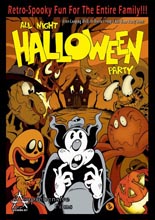
 What better time than the devil’s birthday to show your kids how racist cartoons used to be? The
What better time than the devil’s birthday to show your kids how racist cartoons used to be? The 